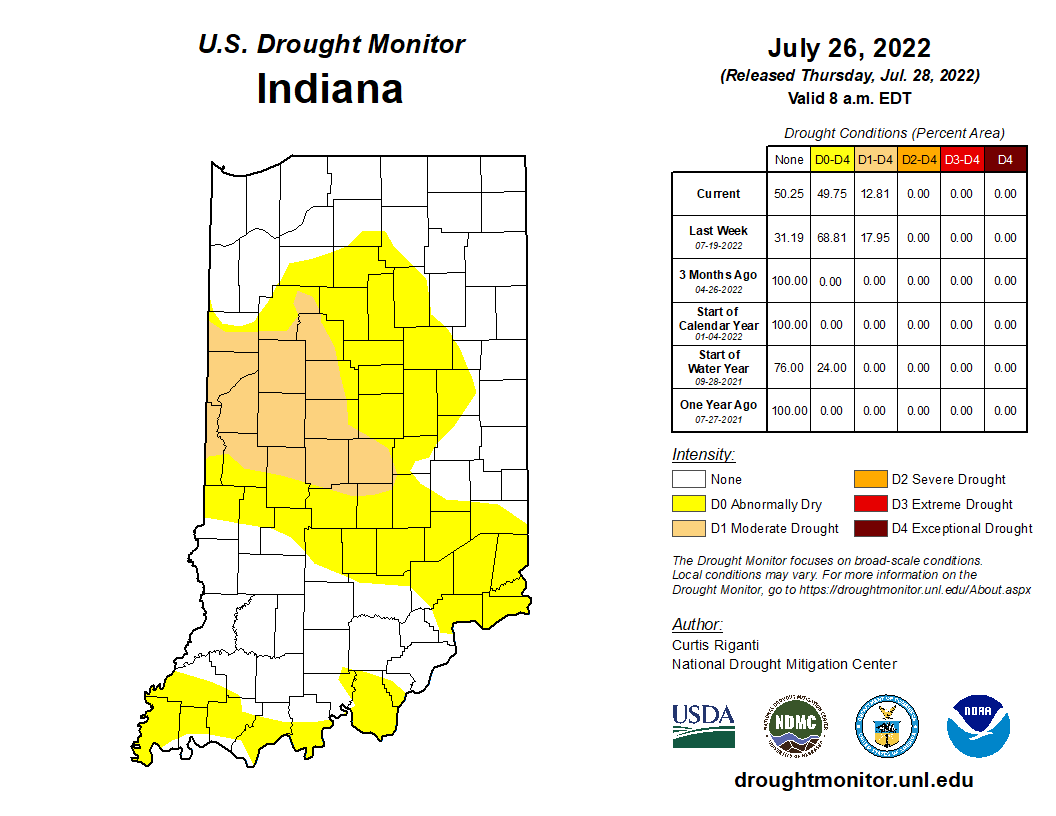
Excessive drying of the upper soil profile is conducive for the development of what some of us affectionately call the “rootless corn” or “floppy corn” syndrome.

Excessive drying of the upper soil profile is conducive for the development of what some of us affectionately call the “rootless corn” or “floppy corn” syndrome.

The Purdue University Crop Diagnostic Training and Research Center is offering a daylong program at the Feldun-Purdue Agricultural Center located just west of Bedford on Thursday September 1.

Everyone remembers last year; many are awaiting this year’s fall armyworm (FAW) attack. Still, at this time, there is little activity reported in the Midwest.

Although some other states in the US corn belt, and in Ontario, Canada are seeing higher moth flights, Indiana, like last year, is a “have-not” state for WBC this year.

We’ve received multiple reports of impressive rootworm beetle populations in cornfields. Most of these fields were continuous corn without rootworm larval protection. These fields seem to be the exception, but the increasing trend is troublesome. This article is a reminder that is pest is still alive and well. For years, high adoption of highly effective Bt hybrids for rootworm control has likely contributed to a decline in rootworm populations. Overall, Indiana producers have managed this pest through a combination of crop rotation and/or use of Bt-rootworm hybrids. This approach, over many years, drastically reduced rootworm populations compared to 20 years ago. More recently, as state-wide rootworm risks to corn damage declined, producers have used less rootworm protection on their corn. This was a combination of those wanting to save money and take a chance with no protection or those assessing their risks on a field-by-field basis with scouting[Read More…]

Rainfall over the past few weeks has helped to improve drought conditions across much of Indiana.

Excessive rainfall events (aka “goose-drownders”, “toad-stranglers”) that occur late in the growing season can cause flooding of rivers, creeks, and streams as well as ponded areas within fields distant from floodwaters.

Reports from those checking cornfields indicate that brown stink bugs had been busy earlier feeding on seedlings and currently within whorls.

National Forage Week was last week (June 19 – 25).

In pastoral agricultural days, and on some farms around the state today, cattle, pigs, turkeys, and chickens roamed the countryside, held in relative place using fencing or a centralized food source.
© 2026 Purdue University | An equal access/equal opportunity university | Copyright Complaints | Maintained by Pest&Crop newsletter
If you have trouble accessing this page because of a disability, please contact Pest&Crop newsletter at luck@purdue.edu.